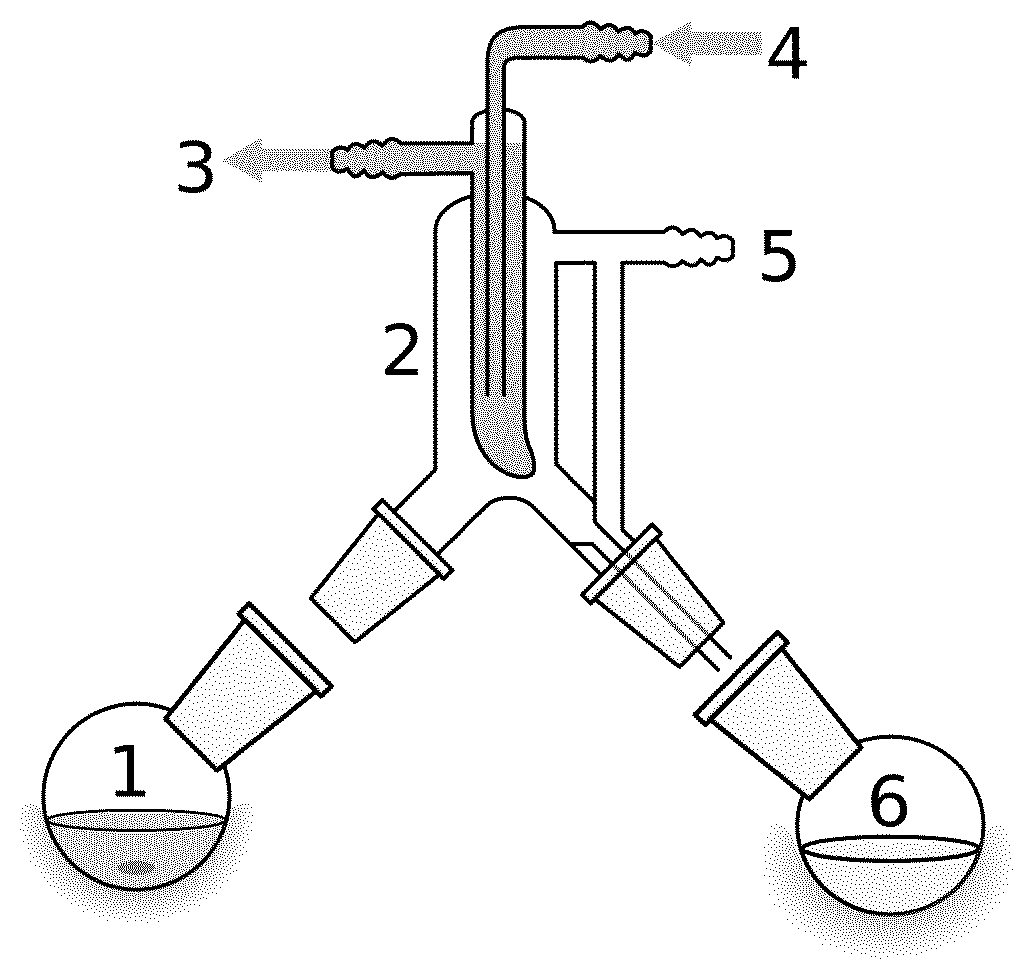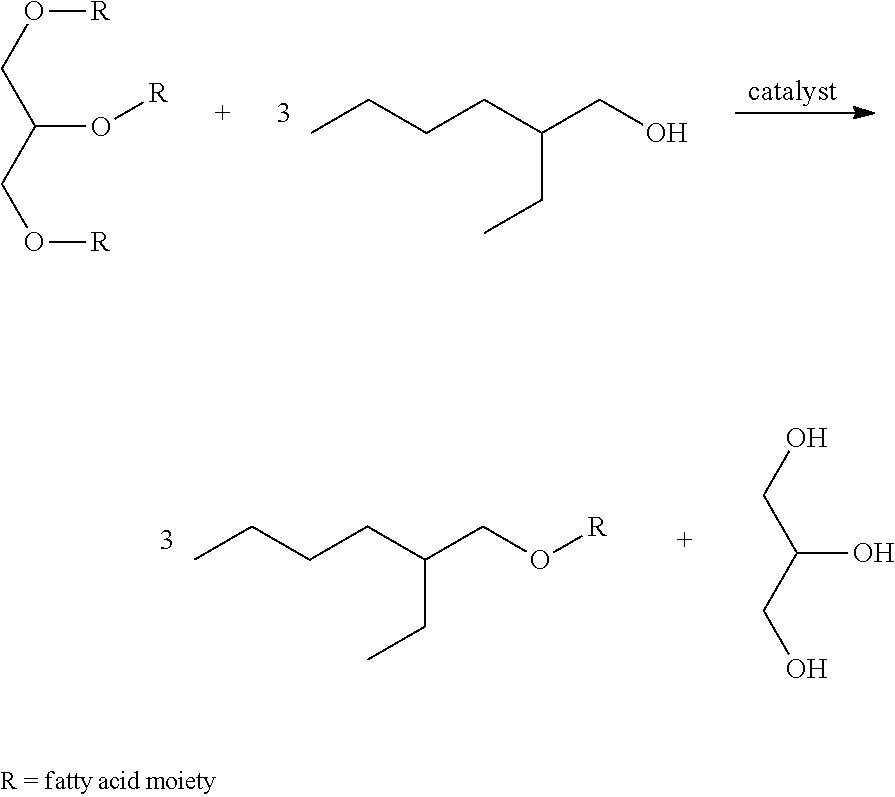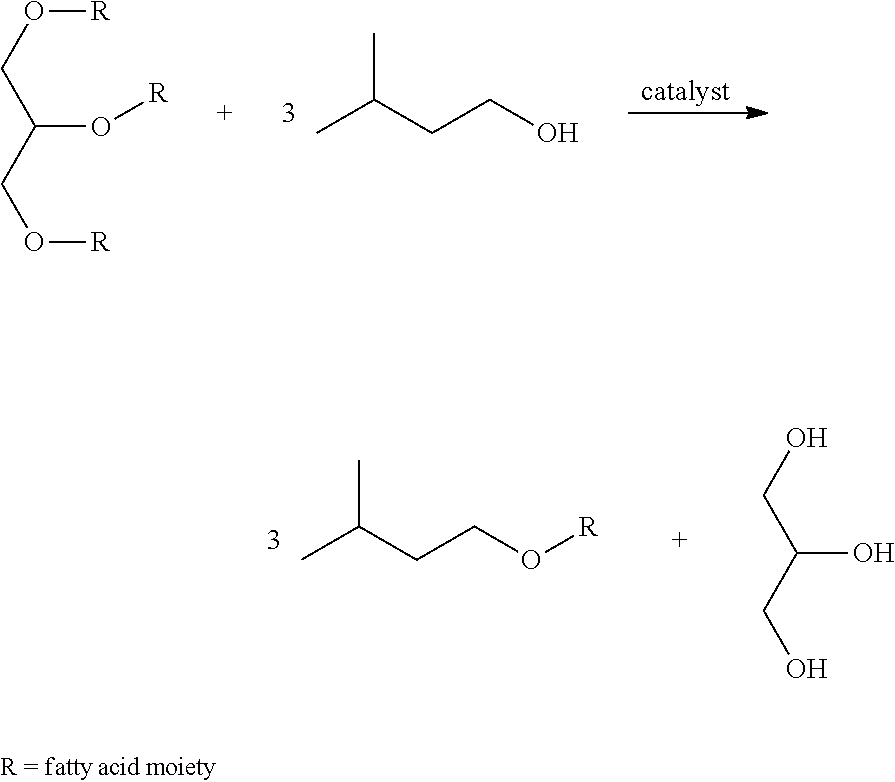Process for preparing mixtures of epoxidized fatty acid esters
a technology of epoxidized fatty acid and esters, which is applied in the direction of fatty acid oxidation, fatty acid chemical modification, fatty-oil/fat refining, etc., can solve the problems of limited compatibility of pvc with pvc, unacceptably high extraction of pvc matrix, and environmental accumulation of non-biodegradable plastics
- Summary
- Abstract
- Description
- Claims
- Application Information
AI Technical Summary
Benefits of technology
Problems solved by technology
Method used
Image
Examples
examples
[0119]In the following, the present invention will be described in more detail with reference to specific examples thereof.
Series of Examples Relating to Epoxidized Isoamylsoyate:
General:
Production of Epoxidized Isoamyl Soyate:
[0120]533.1 g of predried (120° C., 12 mbara) ESBO is added to 289.1 g solution of isoamyl alcohol containing 5.93 wt % of sodium isoamyl alcoholate at 58° C. in a mechanically stirred, jacketed 1 L glass reactor. After 30 min of reaction, the stirring was stopped and 43.3 g of glycerol phase was removed. 180 g of demineralized H2O was added, followed by of 85% H3PO4 in H2O to pH 7.3. The water phase was decanted and removed. The organic phase was washed with an additional 180 g of demineralized H2O. The excess of isoamyl alcohol was removed by heating up to 125° C. and 19 mbara. After cooling to 50° C., 10.2 g of 29 wt % NaOH in H2O and 9.5 g 30 wt % H2O2 in H2O is added. After 15 min 153.1 g of demineralized H2O is added, decanted and removed. The organic ph...
PUM
| Property | Measurement | Unit |
|---|---|---|
| temperature | aaaaa | aaaaa |
| temperature | aaaaa | aaaaa |
| temperature | aaaaa | aaaaa |
Abstract
Description
Claims
Application Information
 Login to View More
Login to View More - R&D
- Intellectual Property
- Life Sciences
- Materials
- Tech Scout
- Unparalleled Data Quality
- Higher Quality Content
- 60% Fewer Hallucinations
Browse by: Latest US Patents, China's latest patents, Technical Efficacy Thesaurus, Application Domain, Technology Topic, Popular Technical Reports.
© 2025 PatSnap. All rights reserved.Legal|Privacy policy|Modern Slavery Act Transparency Statement|Sitemap|About US| Contact US: help@patsnap.com



